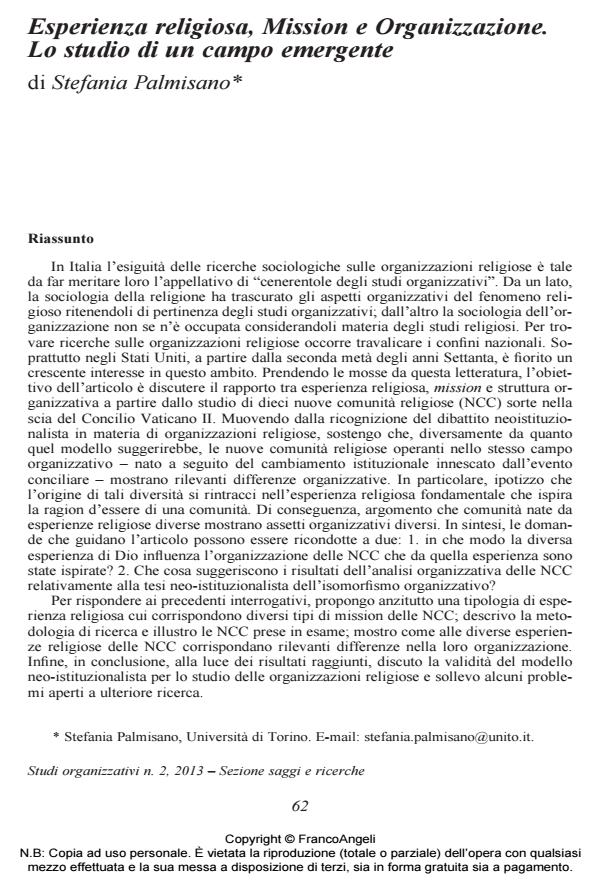Esperienza religiosa, Mission e Organizzazione. Lo studio di un campo emergente
Journal title STUDI ORGANIZZATIVI
Author/s Stefania Palmisano
Publishing Year 2014 Issue 2013/2
Language Italian Pages 26 P. 62-87 File size 96 KB
DOI 10.3280/SO2013-002003
DOI is like a bar code for intellectual property: to have more infomation
click here
Below, you can see the article first page
If you want to buy this article in PDF format, you can do it, following the instructions to buy download credits

FrancoAngeli is member of Publishers International Linking Association, Inc (PILA), a not-for-profit association which run the CrossRef service enabling links to and from online scholarly content.
The aim of this article is to find out whether or not there are meaningful connections between the core religious experience of selected New Catholic Communities (NCCs) born in the wake of Vatican Council II and some of their organizational aspects. Because the NCCs are not only extremely varied, but are also extremely numerous, we chose the research strategy of theory-building from multiple cases, examining ten NCCs based in Piedmont, North-West Italy. Adopting the Neo-institutionalist approach, we claim that NCCs operating in the same organizational field demonstrate important organizational differences. More specifically, we argue that these differences originate from the basic religious experience which inspires a community’s raison d’être. As a consequence, we maintain that communities born out of different religious experiences demonstrate different organizational structures. The article is divided as follows. Using a classical Weberian distinction, we construct a typology of NCCs dividing communities according to the twofold criteria of, first, ascetic and mystical and, second, this-wordly and other-wordly. Later we illustrate our findings from the multiple case study. After that we discuss the form and extent to which relevant organizational differences correspond to NCCs’ different core religious experiences. Finally, we identify some theoretical questions which could be answered by further research.
Keywords: Religious Experience, Mission, Organization, Emerging Field, New Catholic Communities, Vatican Council II.
Stefania Palmisano, Esperienza religiosa, Mission e Organizzazione. Lo studio di un campo emergente in "STUDI ORGANIZZATIVI " 2/2013, pp 62-87, DOI: 10.3280/SO2013-002003